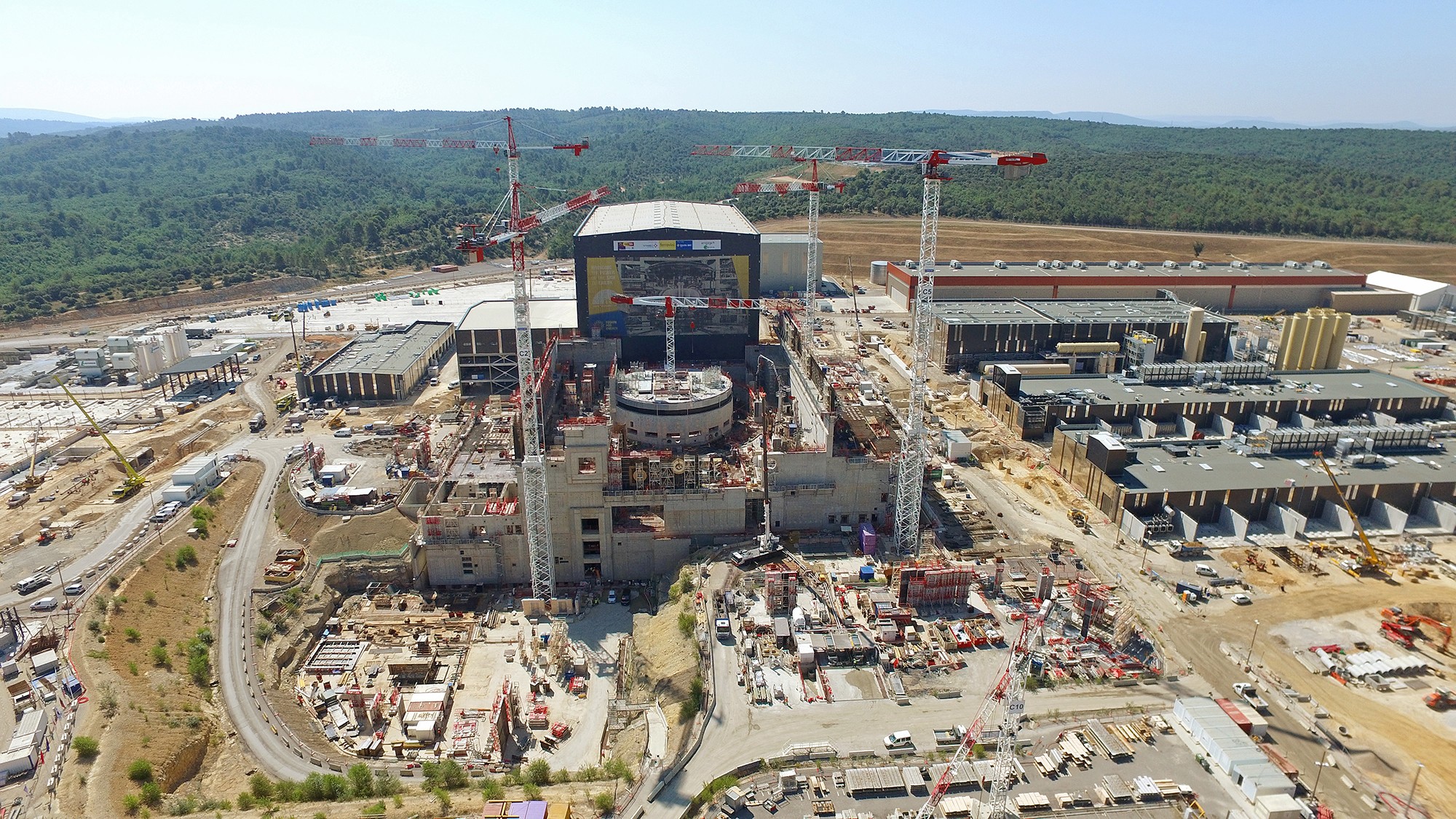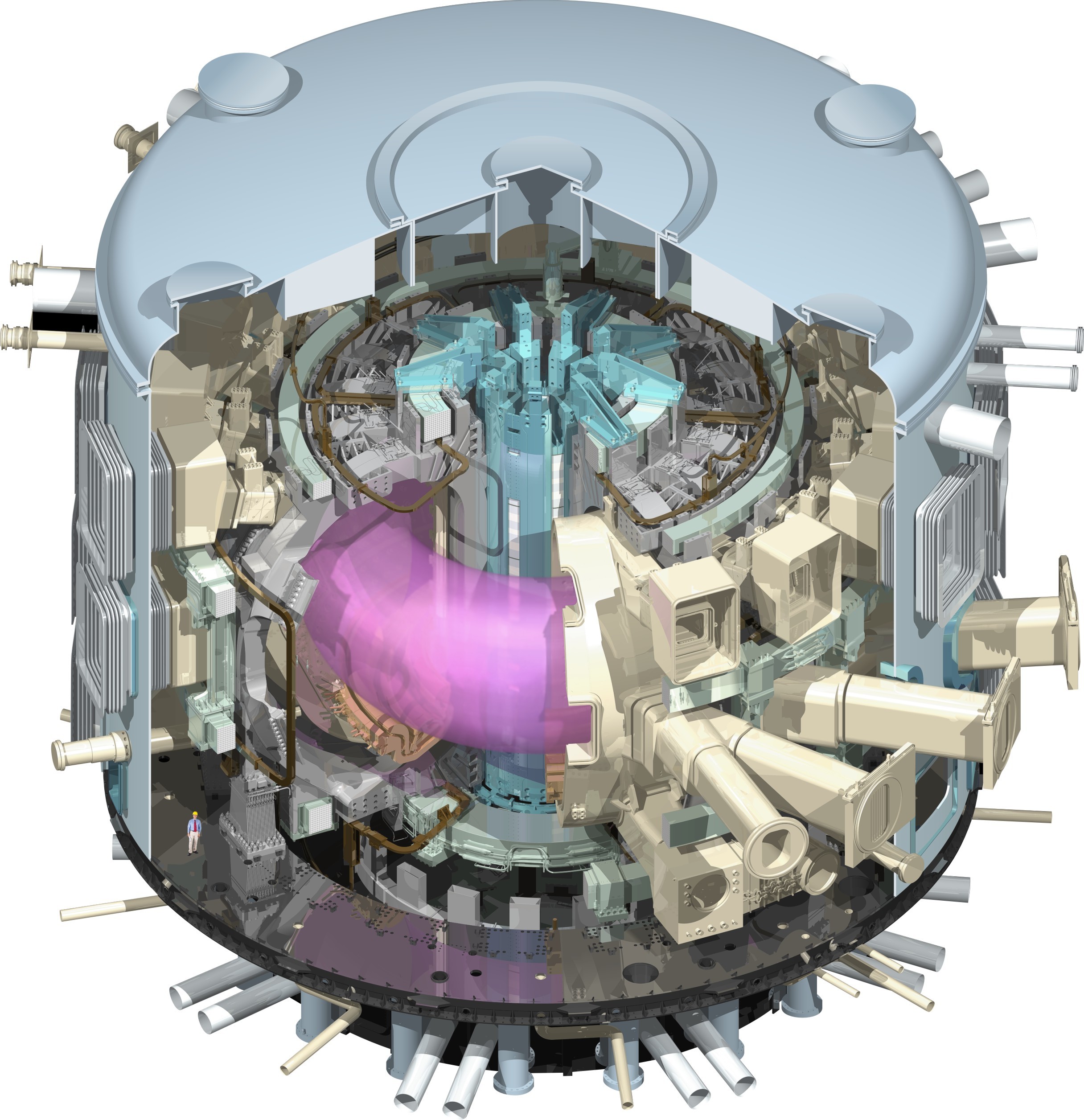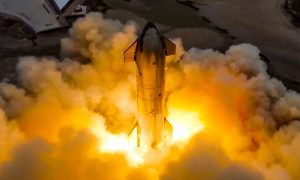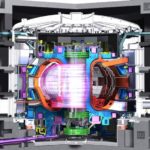

News
Advancement in nuclear fusion tech continues transition to clean energy future
The development of unlimited, carbon-neutral, and safe energy through nuclear fusion is expanding around the world, and scientists at the Atomic Energy Authority in the United Kingdom (AEA) have recently cleared one more key hurdle to making it a commercial reality: exhausting gas that’s hotter than the Sun. The hot plasma created during fusion power generation needs to cool down as it’s being used, but at its extreme temperatures, there aren’t any materials available to withstand the heat. Now, that problem appears to have been solved.
The AEA team’s answer to the heat issue is a “sacrificial wall” design which will require replacement every few years. Plasma will be moved down a path within its fusion generator’s holding device to cool it slightly before coming into contact with a specially designed wall for the remainder of the cooling process. However, even at a lower temperature, the heat will degrade the wall’s integrity over time and need to be changed. With the first nuclear fusion reactor set to turn on in seven years, AEA’s fusion exhaust system may be one of the developments that keeps it on schedule.
It’s said that imitation is the sincerest form of flattery, and recent fusion energy developments show that sentiment’s considerations don’t remain within the bounds of Earth. At about 90 million miles away, our Sun is essentially a fusion reactor in the sky, its large size creating enough gravity to force atoms together at its core and release massive amounts of energy. Artificially reproducing the conditions needed for this kind of generation is tough, but the attempt has been going on since the 1960s. The AEA is representative of one agency in a global endeavor.
The most advanced nuclear fusion project today is ITER, the International Nuclear Fusion Research experimental reactor in southern France, which hosts scientists from 35 countries dedicated to achieving the first ever positive fusion energy production. Their device is called a “tokamak”, and its structure is something like a flattened donut (torus) encapsulated by rings of powerful magnetic coils. The magnetic fields generated by the coils both suspend the plasma created by extreme heat and squeeze the plasma into a small space to create the fusion reactions. ITER is scheduled to turn its reactor on in 2025.
- A visualization of the ITER tokamak in operation.| Credit: ITER.org/Jamison Daniel, Oak Ridge Leadership Computing Facility
- A computer-animated visualization of the ITER tokamak in operation. | Credit: ITER.org
Creating fusion in a laboratory involves two primary parts: 1) creating plasma, a soup of electrons and nuclei released from their atomic structures due to extremely high temperatures; and 2) merging the nuclei of two different types of atoms, generally different forms of hydrogen. The heat in a tokamak is generated from both the magnetic field movement and external heating devices, and the nuclei merge is achieved by squeezing the plasma using those same magnetic fields into a constricted area to encourage collisions. Essentially, the high heat excites the atomic particles, speeding their motion, and their energetic movements within the magnetically confined area significantly increases the likelihood the nuclei will crash and fuse together. When this fusion occurs, a massive amount of energy is released, the object of desire for all involved in this field of research.
The amount of heat needed to convince atoms to release their electrons and form plasma is in the range of millions of degrees Celsius, the core of the Sun itself being 15 million degrees. Without high gravity to aid with squeezing plasma, as in the Sun’s case at 27 times the gravity of Earth, reactors on our planet need to heat well beyond the Sun’s temperature to ensure the atomic particles in the plasma collide and fuse. ITER’s tokamak heats to 100 million degrees Celsius.

All of this heating and magnetic control requires its own energy input, and this is where the current state of fusion energy development is focused. The ratio of energy used and energy produced is called “Q”, the desired amount aimed for by scientists in the field being 10:1. When ten times the energy is produced by nuclear fusion than used to produce it, it will have advanced to a level ready for further development as an alternative power source, or so goes the thinking. ITER’s specific goal is to produce 500 MW of fusion power from 50 MW of heating power.
Once energy is released from the fusion process, it can then be captured to create steam to power generators currently using other power sources such as coal and natural gas. This is another benefit purported benefit of fusion power; it can plug directly into existing power grids, minimizing any disruptions or requirements for new equipment. Combined with the abundant availability of hydrogen and the lack of greenhouses gases or radioactive waste, there are high hopes for fusion’s future as an all-in-one energy solution.
Elon Musk
Tesla Supercharger Diner food menu gets a sneak peek as construction closes out
What are you ordering at the Tesla Diner?

The Tesla Supercharger Diner in Los Angeles is nearing completion as construction appears to be winding down significantly. However, the more minor details, such as what the company will serve at its 50s-style diner for food, are starting to be revealed.
Tesla’s Supercharger Diner is set to open soon, seven years after CEO Elon Musk first drafted the idea in a post on X in 2018. Musk has largely come through on most of what he envisioned for the project: the diner, the massive movie screens, and the intended vibe are all present, thanks to the aerial and ground footage shared on social media.
We already know the Diner will be open 24/7, based on decals placed on the front door of the restaurant that were shared earlier this week. We assume that Tesla Optimus will come into play for these long and uninterrupted hours.
The Tesla Diner is basically finished—here’s what it looks like
As far as the food, Tesla does have an email also printed on the front door of the Diner, but we did not receive any response back (yet) about what cuisine it will be offering. We figured it would be nothing fancy and it would be typical diner staples: burgers, fries, wings, milkshakes, etc.
According to pictures taken by @Tesla_lighting_, which were shared by Not a Tesla App, the food will be just that: quick and affordable meals that diners do well. It’s nothing crazy, just typical staples you’d find at any diner, just with a Tesla twist:
Tesla Diner food:
• Burgers
• Fries
• Chicken Wings
• Hot Dogs
• Hand-spun milkshakes
• And more https://t.co/kzFf20YZQq pic.twitter.com/aRv02TzouY— Sawyer Merritt (@SawyerMerritt) July 17, 2025
As the food menu is finalized, we will be sure to share any details Tesla provides, including a full list of what will be served and its prices.
Additionally, the entire property appears to be nearing its final construction stages, and it seems it may even be nearing completion. The movie screens are already up and showing videos of things like SpaceX launches.
There are many cars already using the Superchargers at the restaurant, and employees inside the facility look to be putting the finishing touches on the interior.
🚨 Boots on the ground at the Tesla Diner:
— TESLARATI (@Teslarati) July 17, 2025
It’s almost reminiscent of a Tesla version of a Buc-ee’s, a southern staple convenience store that offers much more than a traditional gas station. Of course, Tesla’s version is futuristic and more catered to the company’s image, but the idea is the same.
It’s a one-stop shop for anything you’d need to recharge as a Tesla owner. Los Angeles building permits have not yet revealed the date for the restaurant’s initial operation, but Tesla may have its eye on a target date that will likely be announced during next week’s Earnings Call.
News
Tesla’s longer Model Y did not scale back requests for this vehicle type from fans
Tesla fans are happy with the new Model Y, but they’re still vocal about the need for something else.

Tesla launched a slightly longer version of the Model Y all-electric crossover in China, and with it being extremely likely that the vehicle will make its way to other markets, including the United States, fans are still looking for something more.
The new Model Y L in China boasts a slightly larger wheelbase than its original version, giving slightly more interior room with a sixth seat, thanks to a third row.
Tesla exec hints at useful and potentially killer Model Y L feature
Tesla has said throughout the past year that it would focus on developing its affordable, compact models, which were set to begin production in the first half of the year. The company has not indicated whether it met that timeline or not, but many are hoping to see unveilings of those designs potentially during the Q3 earnings call.
However, the modifications to the Model Y, which have not yet been officially announced for any markets outside of China, still don’t seem to be what owners and fans are looking forward to. Instead, they are hoping for something larger.
A few months ago, I reported on the overall consensus within the Tesla community that the company needs a full-size SUV, minivan, or even a cargo van that would be ideal for camping or business use.
Tesla is missing one type of vehicle in its lineup and fans want it fast
That mentality still seems very present amongst fans and owners, who state that a full-size SUV with enough seating for a larger family, more capability in terms of cargo space for camping or business operation, and something to compete with gas cars like the Chevrolet Tahoe, Ford Expedition, or electric ones like the Volkswagen ID.BUZZ.
We asked the question on X, and Tesla fans were nearly unanimously in support of a larger SUV or minivan-type vehicle for the company’s lineup:
🚨 More and more people are *still* saying that, despite this new, longer Model Y, Tesla still needs a true three-row SUV
Do you agree? https://t.co/QmbRDcCE08 pic.twitter.com/p6m5zB4sDZ
— TESLARATI (@Teslarati) July 16, 2025
Here’s what some of the respondents said:
100% agree, we need a larger vehicle.
Our model Y is quickly getting too small for our family of 5 as the kids grow. A slightly longer Y with an extra seat is nice but it’s not enough if you’re looking to take it on road trips/vacations/ kids sports gear etc.
Unfortunately we…
— Anthony Hunter (@_LiarsDice_) July 17, 2025
Had to buy a Kia Carnival Hybrid because Tesla doesn’t have a true 3 row vehicle with proper space and respectable range. pic.twitter.com/pzwFyHU8Gi
— Neil, like the astronaut (@Neileeyo) July 17, 2025
Agreed! I’m not sure who created this but I liked it enough to save it. pic.twitter.com/Sof5nMehjS
— 🦉Wise Words of Wisdom – Inspirational Quotes (IQ) (@WiseWordsIQ) July 16, 2025
Tesla is certainly aware that many of its owners would like the company to develop something larger that competes with the large SUVs on the market.
However, it has not stated that anything like that is in the current plans for future vehicles, as it has made a concerted effort to develop Robotaxi alongside the affordable, compact models that it claims are in development.
It has already unveiled the Robovan, a people-mover that can seat up to 20 passengers in a lounge-like interior.
The Robovan will be completely driverless, so it’s unlikely we will see it before the release of a fully autonomous Full Self-Driving suite from Tesla.
Energy
Tesla launches first Virtual Power Plant in UK – get paid to use solar
Tesla has launched its first-ever Virtual Power Plant program in the United Kingdom.

Tesla has launched its first-ever Virtual Power Plant program in the United Kingdom. This feature enables users of solar panels and energy storage systems to sell their excess energy back to the grid.
Tesla is utilizing Octopus Energy, a British renewable energy company that operates in multiple markets, including the UK, France, Germany, Italy, Spain, Australia, Japan, New Zealand, and the United States, as the provider for the VPP launch in the region.
The company states that those who enroll in the program can earn up to £300 per month.
Tesla has operated several VPP programs worldwide, most notably in California, Texas, Connecticut, and the U.S. territory of Puerto Rico. This is not the first time Tesla has operated a VPP outside the United States, as there are programs in Australia, Japan, and New Zealand.
This is its first in the UK:
Our first VPP in the UK
You can get paid to share your energy – store excess energy in your Powerwall & sell it back to the grid
You’re making £££ and the community is powered by clean energy
Win-win pic.twitter.com/evhMtJpgy1
— Tesla UK (@tesla_uk) July 17, 2025
Tesla is not the only company that is working with Octopus Energy in the UK for the VPP, as it joins SolarEdge, GivEnergy, and Enphase as other companies that utilize the Octopus platform for their project operations.
It has been six years since Tesla launched its first VPP, as it started its first in Australia back in 2019. In 2024, Tesla paid out over $10 million to those participating in the program.
Participating in the VPP program that Tesla offers not only provides enrolled individuals with the opportunity to earn money, but it also contributes to grid stabilization by supporting local energy grids.
-

 Elon Musk1 day ago
Elon Musk1 day agoWaymo responds to Tesla’s Robotaxi expansion in Austin with bold statement
-

 News1 day ago
News1 day agoTesla exec hints at useful and potentially killer Model Y L feature
-

 Elon Musk2 days ago
Elon Musk2 days agoElon Musk reveals SpaceX’s target for Starship’s 10th launch
-

 Elon Musk3 days ago
Elon Musk3 days agoTesla ups Robotaxi fare price to another comical figure with service area expansion
-

 News1 day ago
News1 day agoTesla’s longer Model Y did not scale back requests for this vehicle type from fans
-

 News1 day ago
News1 day ago“Worthy of respect:” Six-seat Model Y L acknowledged by Tesla China’s biggest rivals
-

 News2 days ago
News2 days agoFirst glimpse of Tesla Model Y with six seats and extended wheelbase
-

 Elon Musk2 days ago
Elon Musk2 days agoElon Musk confirms Tesla is already rolling out a new feature for in-car Grok




















